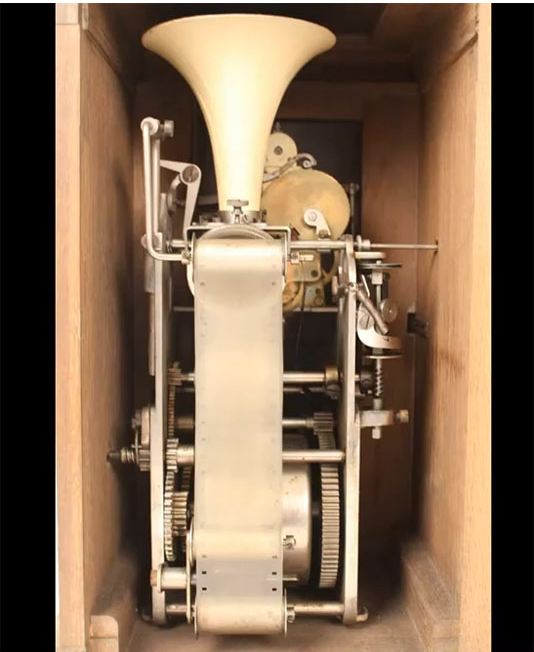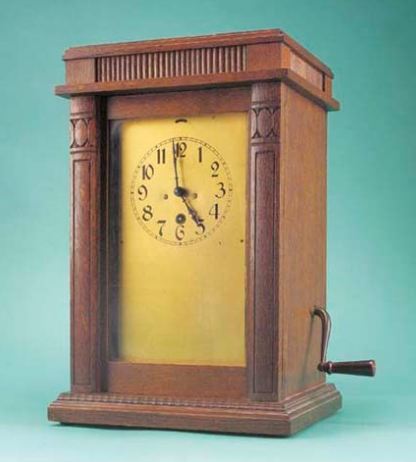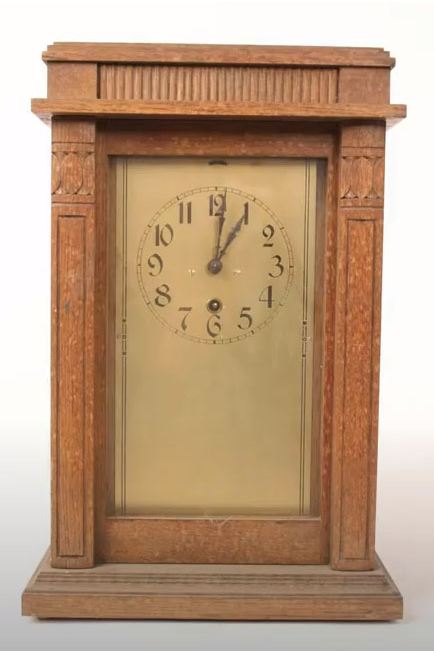The date of this picture is given as October 1930, (or 1920 in some places) and the location as Chicago, USA. The young lady spoke the time every 15 seconds, which must have been a desperately boring job. An automatic system was introduced in 1937.
There are two clocks, presumably so the service continued if one of them stopped. If, however, one became inaccurate but kept running, you would not know which was correct. For this reason ships, where the accurate time was a matter of life-and-death for navigation, carried three chronometers, so you could go with the majority. Darwin's Beagle carried an unprecedented 22 chronometers on her second voyage. For very good reasons.













